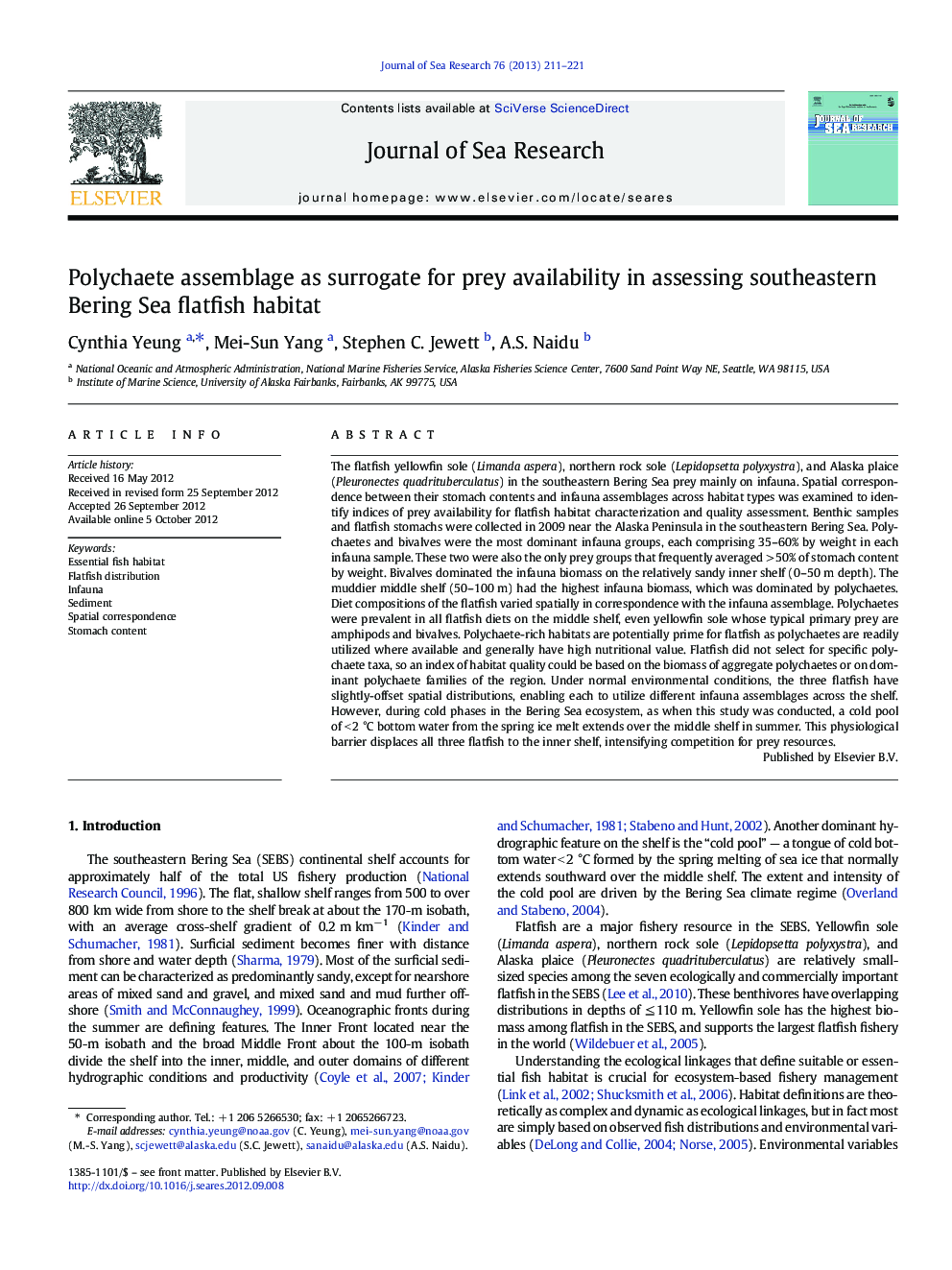| کد مقاله | کد نشریه | سال انتشار | مقاله انگلیسی | نسخه تمام متن |
|---|---|---|---|---|
| 4549901 | 1627498 | 2013 | 11 صفحه PDF | دانلود رایگان |

The flatfish yellowfin sole (Limanda aspera), northern rock sole (Lepidopsetta polyxystra), and Alaska plaice (Pleuronectes quadrituberculatus) in the southeastern Bering Sea prey mainly on infauna. Spatial correspondence between their stomach contents and infauna assemblages across habitat types was examined to identify indices of prey availability for flatfish habitat characterization and quality assessment. Benthic samples and flatfish stomachs were collected in 2009 near the Alaska Peninsula in the southeastern Bering Sea. Polychaetes and bivalves were the most dominant infauna groups, each comprising 35–60% by weight in each infauna sample. These two were also the only prey groups that frequently averaged > 50% of stomach content by weight. Bivalves dominated the infauna biomass on the relatively sandy inner shelf (0–50 m depth). The muddier middle shelf (50–100 m) had the highest infauna biomass, which was dominated by polychaetes. Diet compositions of the flatfish varied spatially in correspondence with the infauna assemblage. Polychaetes were prevalent in all flatfish diets on the middle shelf, even yellowfin sole whose typical primary prey are amphipods and bivalves. Polychaete-rich habitats are potentially prime for flatfish as polychaetes are readily utilized where available and generally have high nutritional value. Flatfish did not select for specific polychaete taxa, so an index of habitat quality could be based on the biomass of aggregate polychaetes or on dominant polychaete families of the region. Under normal environmental conditions, the three flatfish have slightly-offset spatial distributions, enabling each to utilize different infauna assemblages across the shelf. However, during cold phases in the Bering Sea ecosystem, as when this study was conducted, a cold pool of < 2 °C bottom water from the spring ice melt extends over the middle shelf in summer. This physiological barrier displaces all three flatfish to the inner shelf, intensifying competition for prey resources.
► Polychaetes, where available, are readily consumed by small-mouthed flatfish.
► High abundance, biomass and nutritional value of polychaetes render them prime prey.
► Biomass of polychaetes could be used as an index of habitat quality for flatfish.
► Interspecific competition may reduce polychaete consumption in some flatfish species.
► Cold phases in the ecosystem may intensify competition.
Journal: Journal of Sea Research - Volume 76, February 2013, Pages 211–221